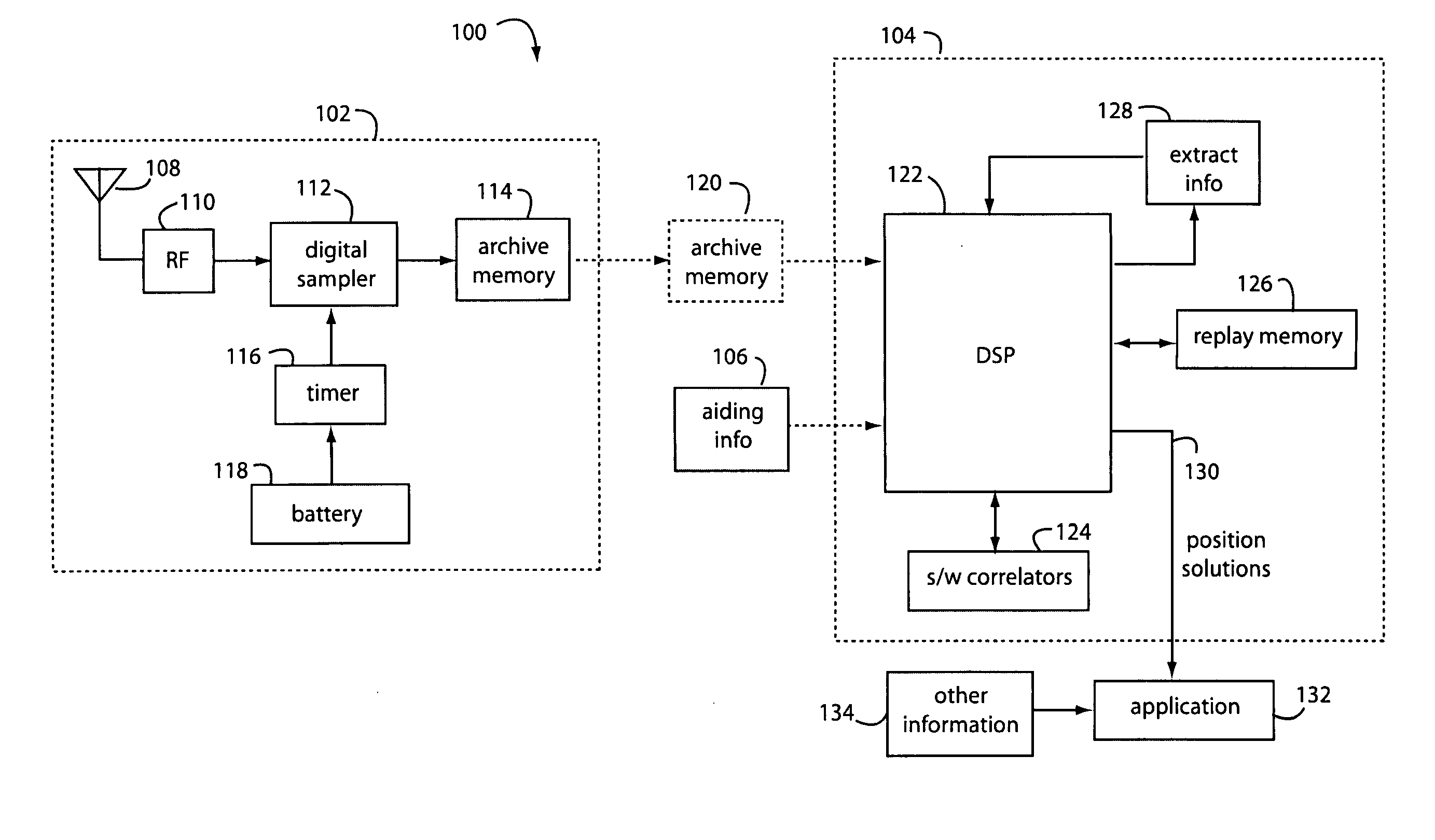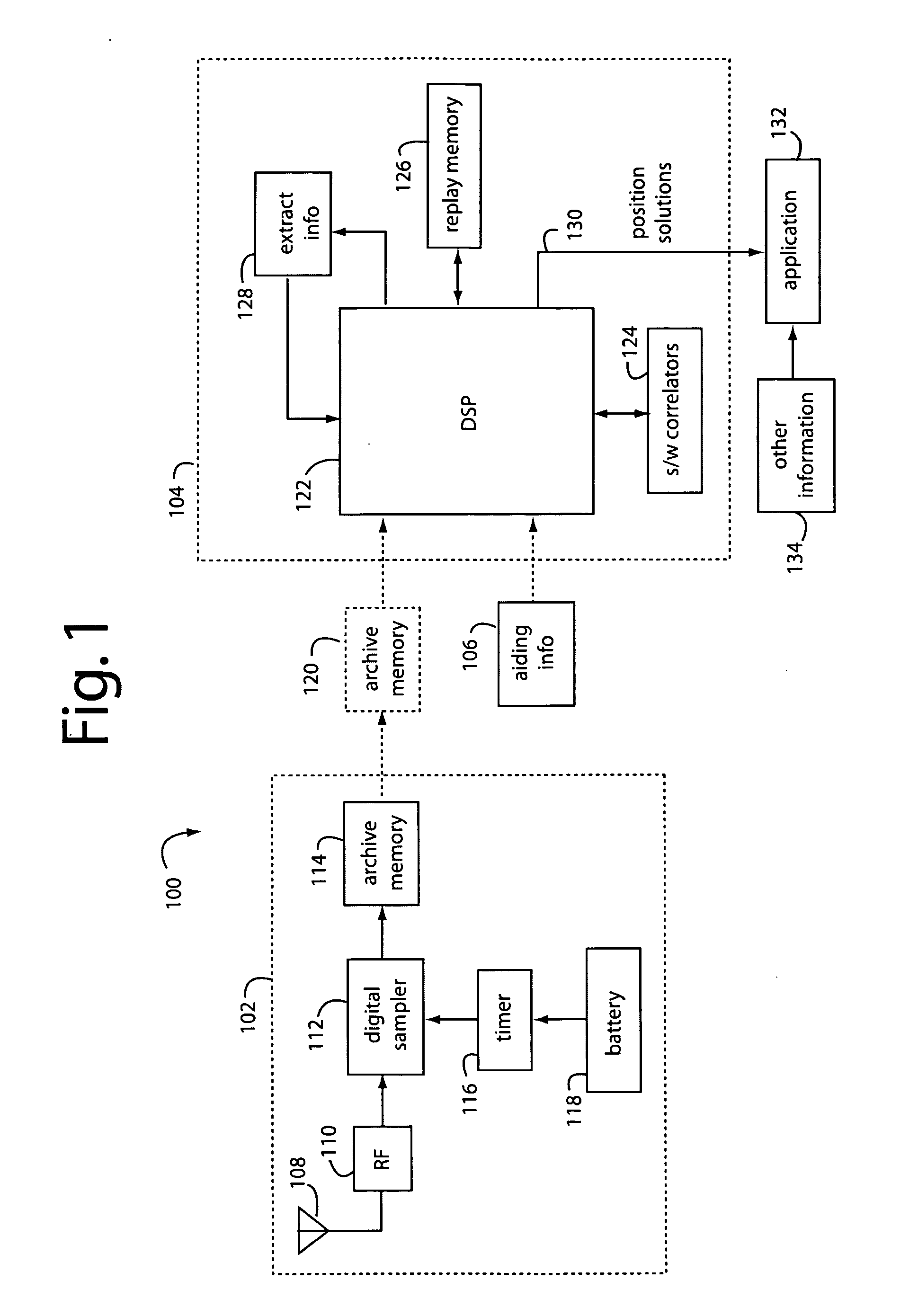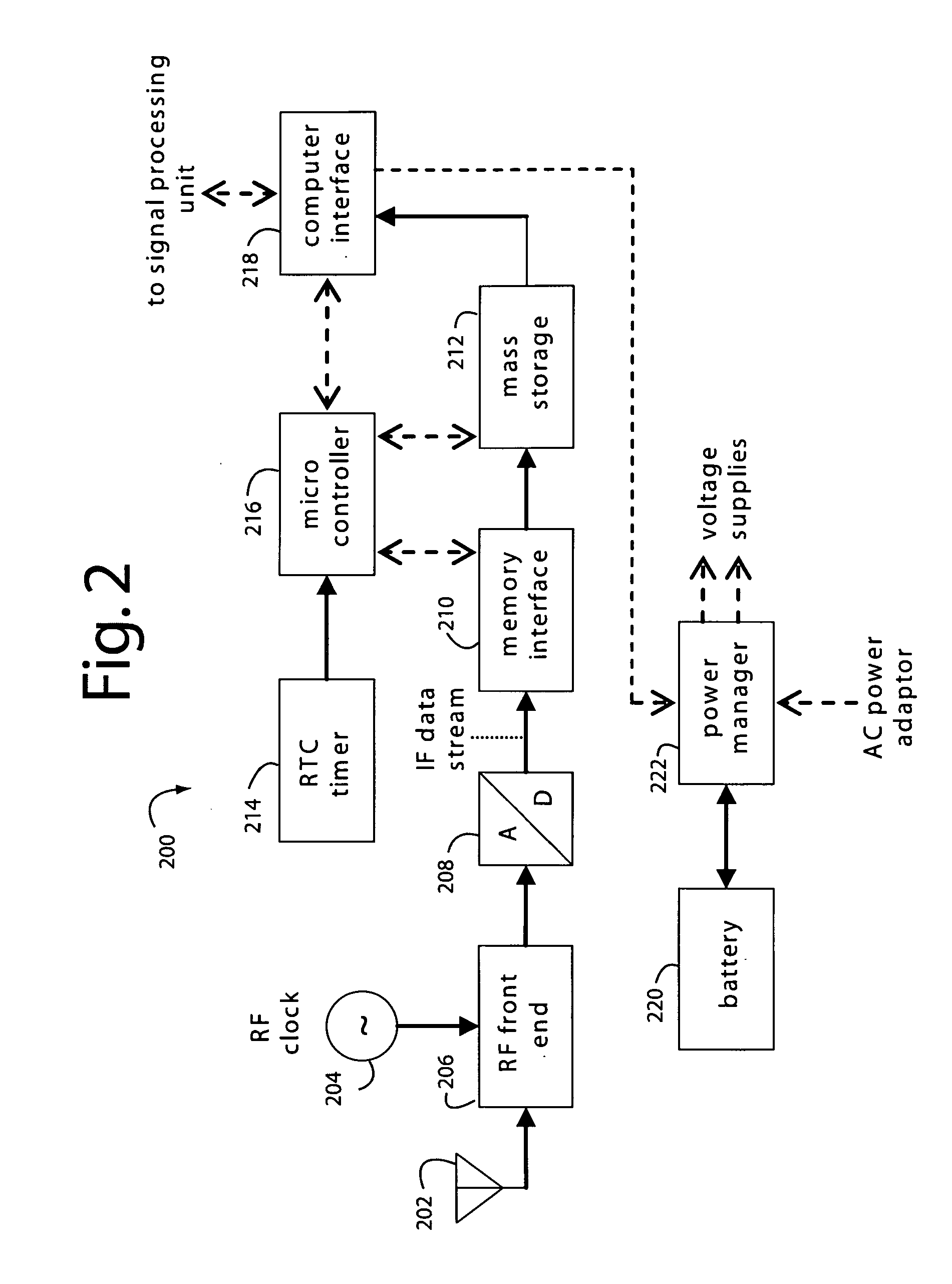Navigation data acquisition and signal post-processing
a technology of data acquisition and signal post-processing, applied in satellite radio beaconing, measurement devices, instruments, etc., can solve the problems of high power consumption of portable devices, high cost of non-assisted and assisted receivers, and low power consumption. , to achieve the effect of reducing power consumption
- Summary
- Abstract
- Description
- Claims
- Application Information
AI Technical Summary
Benefits of technology
Problems solved by technology
Method used
Image
Examples
Embodiment Construction
[0022]FIG. 1 represents system embodiment of the present invention, herein referred to by the general reference numeral 100. The system 100 comprises an independent GNSS data acquisition unit 102 that collects raw digitized radio frequency (RF) or intermediate frequency (IF) data sampled from GNSS satellite transmissions. Several GNSS data acquisition units 102 may be used to independently collect GNSS satellite transmissions corresponding to the places and times they were operated, and a single GNSS data acquisition unit 102 may be deployed at different times and to different places if the schedule for that is practical.
[0023]A single post-processor 104, or a number of them, can then be used to respectively batch process the raw digitized RF or IF data samples. It will extract at least the position of the respective GNSS data acquisition unit 102 when it collected the corresponding raw digitized RF or IF data samples. The post-processor 104 can also be used to extract velocity, tim...
PUM
 Login to View More
Login to View More Abstract
Description
Claims
Application Information
 Login to View More
Login to View More - R&D
- Intellectual Property
- Life Sciences
- Materials
- Tech Scout
- Unparalleled Data Quality
- Higher Quality Content
- 60% Fewer Hallucinations
Browse by: Latest US Patents, China's latest patents, Technical Efficacy Thesaurus, Application Domain, Technology Topic, Popular Technical Reports.
© 2025 PatSnap. All rights reserved.Legal|Privacy policy|Modern Slavery Act Transparency Statement|Sitemap|About US| Contact US: help@patsnap.com



